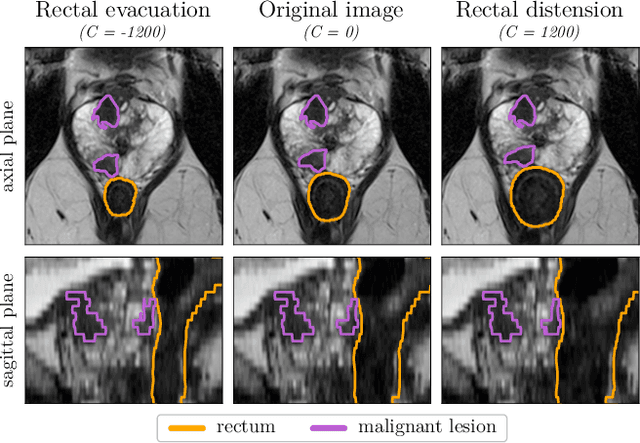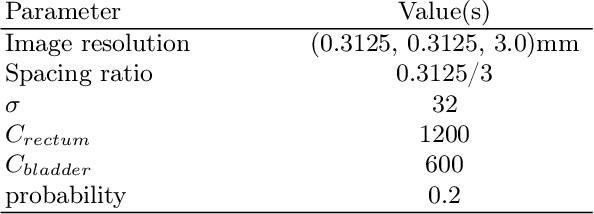Kevin S. Zhang
Anatomy-informed Data Augmentation for Enhanced Prostate Cancer Detection
Sep 07, 2023



Abstract:Data augmentation (DA) is a key factor in medical image analysis, such as in prostate cancer (PCa) detection on magnetic resonance images. State-of-the-art computer-aided diagnosis systems still rely on simplistic spatial transformations to preserve the pathological label post transformation. However, such augmentations do not substantially increase the organ as well as tumor shape variability in the training set, limiting the model's ability to generalize to unseen cases with more diverse localized soft-tissue deformations. We propose a new anatomy-informed transformation that leverages information from adjacent organs to simulate typical physiological deformations of the prostate and generates unique lesion shapes without altering their label. Due to its lightweight computational requirements, it can be easily integrated into common DA frameworks. We demonstrate the effectiveness of our augmentation on a dataset of 774 biopsy-confirmed examinations, by evaluating a state-of-the-art method for PCa detection with different augmentation settings.
Numerical Simulation of Exchange Option with Finite Liquidity: Controlled Variate Model
Jun 14, 2020



Abstract:In this paper we develop numerical pricing methodologies for European style Exchange Options written on a pair of correlated assets, in a market with finite liquidity. In contrast to the standard multi-asset Black-Scholes framework, trading in our market model has a direct impact on the asset's price. The price impact is incorporated into the dynamics of the first asset through a specific trading strategy, as in large trader liquidity model. Two-dimensional Milstein scheme is implemented to simulate the pair of assets prices. The option value is numerically estimated by Monte Carlo with the Margrabe option as controlled variate. Time complexity of these numerical schemes are included. Finally, we provide a deep learning framework to implement this model effectively in a production environment.
 Add to Chrome
Add to Chrome Add to Firefox
Add to Firefox Add to Edge
Add to Edge